Voices of the Blackstone
Restoring the Blackstone River has been a decades-long endeavor, with Native voices leading the way
By Meredith Haas| Photographs by Jesse BurkeMax Brown-Garcia, Narragansett Traditional dancer and artist, performs ceremonial dance in traditional regalia.
The steady drumbeat and rhythmic chant of Indigenous songs filled the hall of the Blackstone Valley Visitor Center in Pawtucket—echoing the valley’s long and storied history with hopes for a better future.
Members of the Narragansett and Nipmuc tribes gathered with the Wampanoag nations—whose ancestral territory encompasses the Blackstone River watershed—along with local groups dedicated to the protection of the river to honor its history and recognize the efforts to revive what has been considered one of the most polluted and abused rivers in America.
Tribal dancers, some in richly colored and decorated ceremonial dress, and guests danced around the drummers in tribute to the river’s importance for sustenance and spiritual connection.
“For us, [the river] is a sacred entity,” says Nancy Brown-Garcia, chief deputy historic preservation officer of the Narragansett Indian Tribe, at the Second Intertribal Gathering at the visitor center hosted by the Narragansett Indian Tribe and the Hassanamisco Nipmuc Band this past fall. “It’s a heartbreaking situation to see that the Blackstone River has been abused for this long.”
Mishi Unnukquom Garcia, Narragansett dancer and artist, performs a shawl dance at the second Intertribal Gathering.
Underfoot, a sprawling map painted across the floor of the visitor center’s foyer shows the journey the 48-mile-long river travels from its northern headwaters in Worcester, Massachusetts, to its southern terminus in Narragansett Bay, highlighting the many communities interconnected with this body of water.
“When we look at the past of this area, it’s not good,” says Hiawatha Brown, Narragansett tribal elder and master of ceremonies for the gathering. “When we look at the disturbance of the rich Native history of the people of this region, who lived here for tens of thousands of years … I’m frightened to see what the future will bring. This is why these social community gatherings are important for us all to think about the protection of each other and the things that we value, what we continue to protect for our existence.”
Brown-Garcia adds, “We can’t do anything alone. So it has to be an effort from everyone to change.”
Across the street from the visitor center, the dark, rapidly churning waters of the Blackstone River rush over the historic Slater Mill Dam to the Main Street Dam built on top of the historic Pawtucket Falls, where the river flows under the Main Street Bridge. From here, it joins the Seekonk River, which flows into the Providence River and onto Narragansett Bay.
The Slater Mill, now a museum and educational center managed by the National Park Service, retains the Federal style architecture of the former water-powered textile mill built more than 200 years ago. It is a modest relic of the birthplace of the American Industrial Revolution along a modest river that is neither very wide nor very long. Still, it is ever a reminder of the beginnings of the industrial and urban pollution that has plagued rivers across the country.
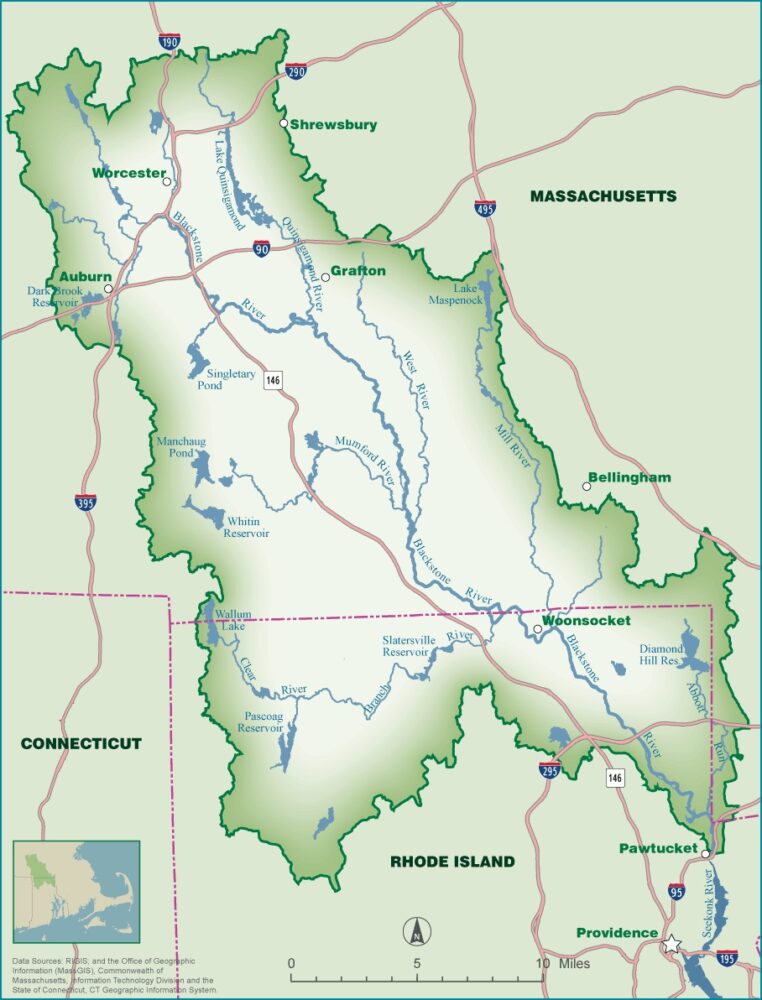
Blackstone River Watershed map courtesy of the Blackstone River Watershed Association.
Before it was called the Blackstone, it was known as Kittacuck, “the great tidal river” to the Nipmuc. The river weaved through thick forests and marshes that provided a wealth of wildlife, including migratory fish such as shad, herring, and Atlantic salmon that would venture upriver from the ocean to spawn in freshwaters. It was essential for ceremonies, livelihood, and travel.
“The [Kittacuck] took us south into other parts of our homeland and northern Rhode Island, and even farther south into the areas of the Wampanoag and Narragansett for trade and fishing and hunting. It was, like any body of water, multipurpose,” says Bruce Curliss, a member of the Hassanamisco Nipmuc Band who grew up playing along the river in Woonsocket.
As colonists arrived in the 17th century, the river became known as the Blackstone after William Blackstone, one of the first Europeans to settle in the area. In 1793, the Old Slater Mill was built, bringing water-powered cotton spinning technology to propel America’s textile industry.
By the mid-1800s, hundreds of mills and factories popped up along its banks, along with the construction of dams and unfettered dumping of heavy metals, dyes, trash, and sewage that led to the river’s decline. What is sometimes lost in the retelling of New England history is that the Native peoples continued to live alongside the newcomers.
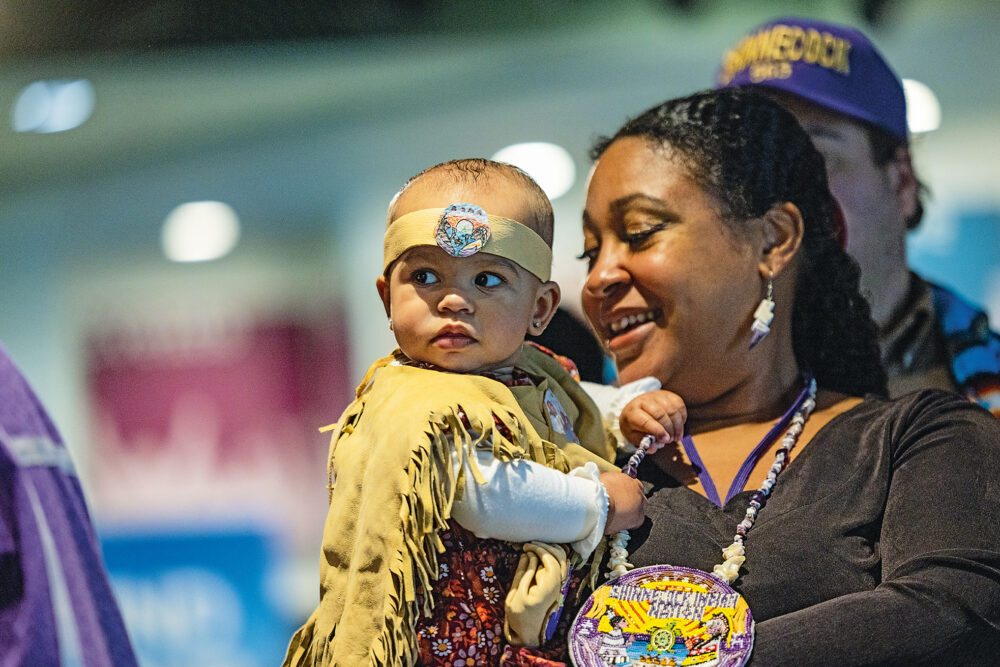
“Every decision we make has an impact on seven generations forward,” says Curliss, referring to the Seven Generation Principle applied by many Indigenous tribes and nations.
Despite the tumultuous history of Indigenous tribes and settlers, “if you go back to colonial times, New England-based tribes made a decision to live … in harmony with the [colonists] … that has allowed us to continue to still be here. We were active participants in that, and I think that gets lost,” notes Curliss. These tribes are now building partnerships with non-Native communities and organizations centered around sustainability and the Blackstone River. “There have been so many voices, now, screaming for years about the Blackstone. People are starting to recognize the importance of the river and not just historically.”
That recognition began in many ways in the 1960s and 70s, when environmentalism was gaining mainstream traction. The pollution of the Blackstone River began to attract wider attention, prompting the largest one-day regional cleanup in the country’s history known as Operation Zap. On September 9, 1972, more than 10,000 volunteers from more than 20 towns and communities gathered at the river to remove everything from small debris to washing machines and school buses that had to be retrieved using helicopters, cranes, and other heavy construction equipment.
“Back then, everyone was using the river as a dump. It was considered acceptable,” says Donna Kaehler, director of Keep Blackstone Valley Beautiful, in an article by ecoRI News commemorating Operation Zap in 2022. “The river smelled, it was foamy, and the water quality was really bad. It’s a lot better now, but it’s still not one hundred percent.”
While legislation such as the Clean Water Act has helped improve water quality to allow for canoeing and kayaking, swimming is still not advised. Fences and cement retaining walls that line the riverbanks in various places collect trash, some of it deposited by stormwater.
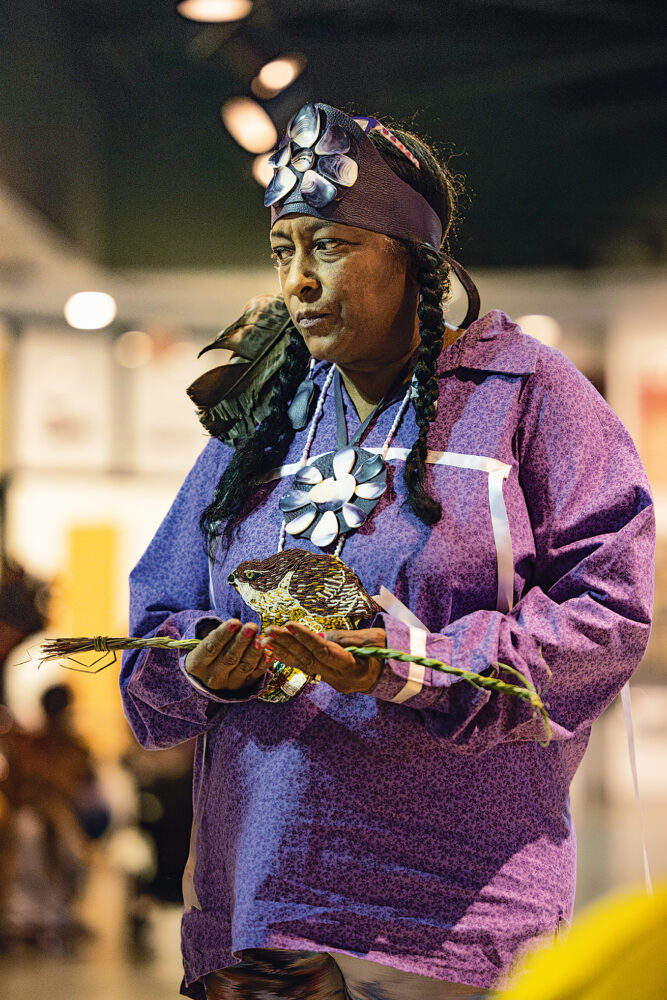
Nancy Brown-Garcia, chief deputy historical preservation officer for the Narragansett Indian Tribe and a Traditional artist, Bruce Curliss, waterways advocate for the Hassanamisco Nipmuc Band and executive director of the Blackstone River Watershed Council, and Hiawatha Brown, Narragansett tribal elder and master of ceremonies for the gathering in the second Intertribal Gathering exchange gifts in thanks and recognition of each other’s Indigenous heritage.
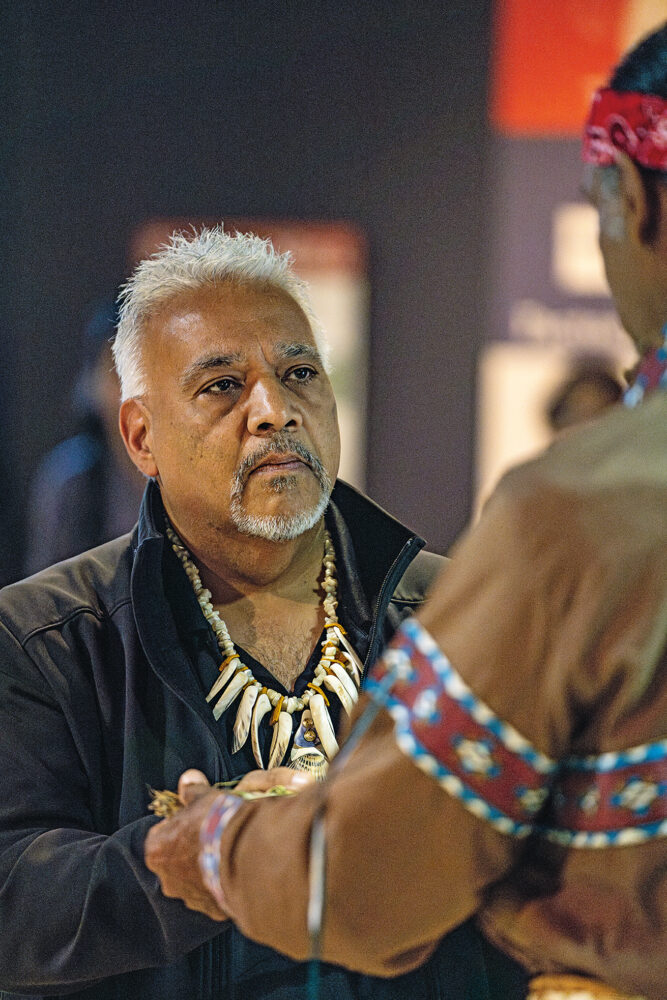
“We’ve taken maybe 25,000 tires out … and other major cleanups removed appliances and furniture, junk cars, and things like that,” says John Marsland, founder of Friends of the Blackstone, of earlier cleanup efforts.
The Friends group launched in 1990, and during the past 30 years, Marsland has seen the sources of pollution shift. Now, he says, “It’s mainly cleaning up stormwater runoff, like plastic bottles, which get broken down into smaller pieces, and it’s everywhere. Anytime there’s a rainstorm, you wouldn’t believe the amount of trash left behind by runoff.”
Storm runoff also carries chemicals, oil, and nutrients from fertilizers from the streets into the river, and heavy rains are also linked to raw or partially treated sewage entering the river when sewer systems overflow. Heavy metals and industrial chemicals from over 100 years of industrialization and urbanization still reside in the sediment and soil. Meanwhile, more recent sources have been added by companies like Schnitzer Steel, which last year was involved in a $2.2 million settlement for violating the Clean Water Act and allowing contaminants to run from its facilities into several rivers, including the Blackstone.
A portion of these settlement funds went to the Nipmuc Indian Development Corporation to fund water quality improvement projects in the river.
“Our council elders said, ‘We need to know what’s in the sediment and whether it can be cleaned up … Can it be abated so that we can go back to using this river?’” says Curliss, explaining how the funds will support research at Brown University to test the sediment at various points along the river. “We’re going to work with them to take samples to see what types of pollutants there are. Then the next step is to figure out if we can get rid of it.”
BRINGING THE FISH BACK
As efforts continue to improve the water quality and reduce pollution along the river, the biggest restoration undertaking is focused on bringing back migratory fish species that have not been present in more than 200 years.
Around 20 years ago, the Friends of the Blackstone gave money to the Rhode Island Department of Environmental Management (DEM) to stock the river with trout, Marsland says. “But then we proceeded to see if we could get fish restoration on the river too,” he adds.
Restoring fish to the Blackstone entails using fish ladders, which are essentially stepping stones that allow anadromous fish such as herring, American eel, and American shad easier passage upstream over or around obstacles such as dams. To do this, advocates launched the Lower Blackstone River Passage Project, a plan that has been several decades in the making and has brought together various tribes; organizations, such as Friends of the Blackstone, the Blackstone Watershed Collaborative, Save The Bay, the Narragansett Bay Estuary Program, and The Nature Conservancy of Rhode Island; and state and federal agencies like DEM, the National Park Service, and the Army Corps of Engineers.
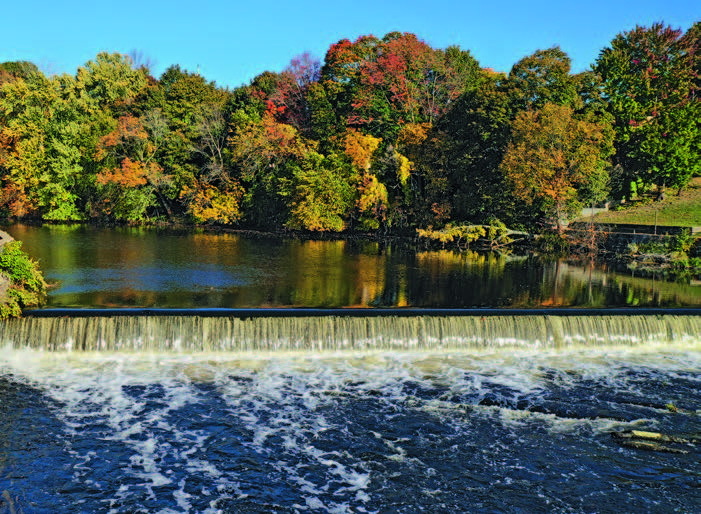
The Slater Mill Dam is one of four on the Blackstone eyed for fish passages. Rhode Island Sea Grant photograph
Curliss says the project is important not only for the fish but for the river as a whole ecosystem. “We’ve seen it over and over again when you reintroduce natural wildlife to certain rivers that haven’t had it in hundreds of years. Those rivers start to come back to life in different ways and become re-energized. That nurturing really can revive something that’s not there.”
Jason McNamee, DEM deputy director for natural resources, agrees. “One way of configuring the fish passage design is we can provide public access with a walkway and viewing window to watch the fish swim by, and we’ll use that for scientific purposes,” he says. “It’ll also increase flood resiliency by creating more storage for water. Not a lot, but it’s not a negative … It’s more than just bringing the fish back to this river.”
How do we turn back to our rivers as a way of anchoring us?
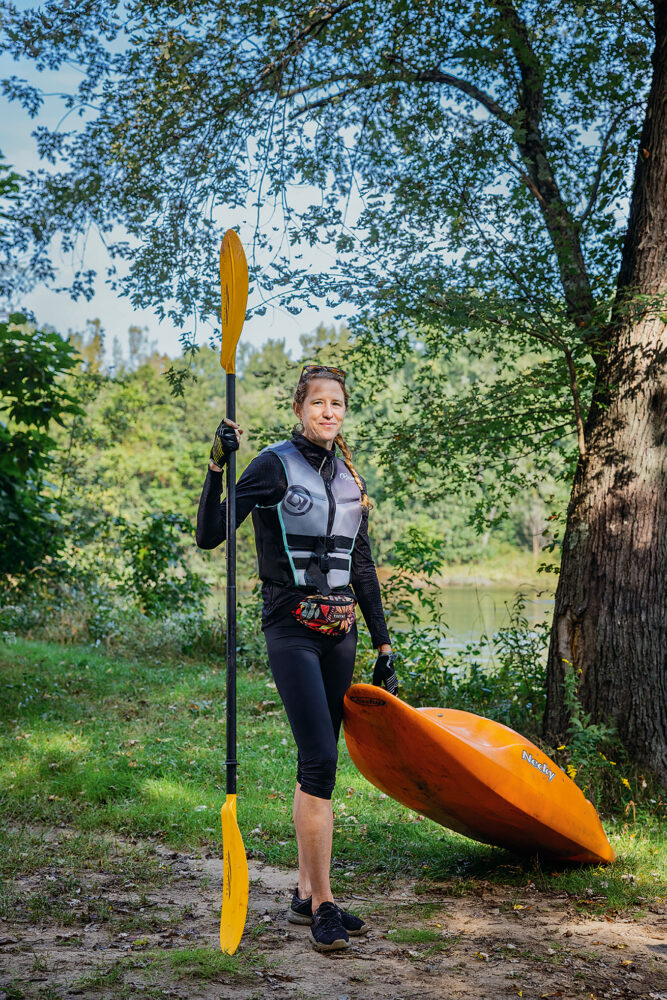
Emily Vogler, associate professor of landscape architecture at the Rhode Island School of Design, is co-founder of the Blackstone River Commons project.
Emily Vogler, associate professor of landscape architecture at the Rhode Island School of Design, co-founded the Blackstone River Commons project. This project aims to support stewardship and river protection as a shared resource. Vogler echoes Curliss and McNamee’s view of river restoration in ecological and community contexts.
“One of my goals with outreach and community engagement work is to say, ‘How do we turn back to our rivers as a way of anchoring us and making people think about their connection to place, their connection to communities, and connection to each other?’” she says. “Where and how do we understand the river itself as a relation, which we all have to be respectful of, and not just for the human benefits but that of the river itself, as an entity that deserves respect?”
Despite these groups converging around improving the Blackstone, stubborn challenges to the fish passage project remain.
“We have so much support from the community, from all of these different tribes, from the nonprofits in the state and our senators, our Federal Congress folks. It’s widespread … Even the dam owners say they want it. There are questions on how to achieve it and pay for it, but everyone says this is a worthy cause to bring migratory species back to the river,” says Stefanie Covino, program manager of the Blackstone Watershed Collaborative, an umbrella organization encompassing watershed associations, land trusts, universities, federal/state/local agencies, consultants, and others focused on the Blackstone River watershed and funded by the Narragansett Bay Estuary Program.
Although the project is ultimately intended to address the entire river length, it is being divided into phases. Phase I of the project is focused in Rhode Island on the first four dams—Main Street, Slater Mill, Elizabeth Webbing, and Valley Falls—between Pawtucket and the restored Lonsdale Marsh in Lincoln that was once the site of a drive-in movie theater and is now a potential spawning habitat for fish and other species.
Progress has been slow due to complications involving funding and getting buy-in from hydropower companies operating at the first and fourth dams, according to McNamee and Covino. This is largely because the first dam was exempted in the 1980s from having to consider a fish passage or shoulder any financial responsibility. At the time, the ledge was seen as too steep for any fish to pass, says Covino.
With dams dividing the river, each must allow fish through for the project to succeed.
“If the first dam doesn’t provide fish passage, no one above it has to. Once the first one has it, the next one does, and when that one has it, the next one does. So it’s a very long-term process,” Covino says, explaining that funding from grants and other sources are needed, which project partners are seeking.
Beyond the work of any one initiative, Vogler believes that Native voices are crucial to the stewardship of the river and the environment as a whole.
“Having conversations with Nancy [Brown-Garcia] and Bruce [Curliss] … and the events that they do, bring the conversation to a different level,” she explains, referring to the Intertribal Gathering and other events such as the Spring Migration Parade. “It’s not just about finding solutions. It’s going much deeper than that. It’s trying to establish a different way of relating to the river and one another. And, to me, that is actually the change we’re going to need … to make the kind of larger societal environmental changes ahead of us.”
Narragansett Bay Estuary Program
This issue is supported by the Narragansett Bay Estuary Program (NBEP), a nonprofit organization led by stakeholders that pursues place-based conservation across the three-state Narragansett Bay region.
With its 30-member partnership, NBEP catalyzes scientific inquiry and collective action to restore and protect the region’s water quality, wildlife, and quality of life.
This issue of 41°N highlights several of the stories and partners driving a 10-year blueprint to realize their vision of clean water and habitat to sustain all who live, work, and play in the Narragansett Bay region.
